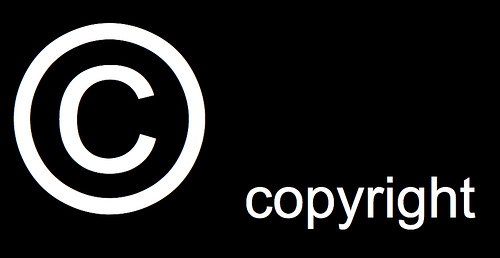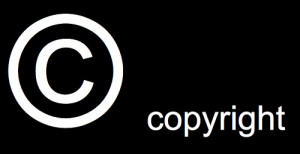Software
A. Copying of code
The modern Copyright Act not only recognises the creative, literary or musical works for the individual authors, but also provides an effective legal framework for protecting the rights of the owners of Computer software. Section 2 (o) of the Copyright Act states that literary work includes “computer programmes, tables and compilations including computer databases”. Computer programme has been defined under Section 2 (ffc) of the Copyright Act, 1957 as “a set of instructions expressed in words, codes, schemes or in any form, including a machine readable medium, capable of causing a computer to perform a particular task or achieve a particular result.”
In India, the copyright for software lasts for the life of the author, plus sixty years, after the expiry of such period the work comes into public domain. In case of pseudonymous or anonymous work and work by public undertakings, the copyright lasts for sixty years from the date of publication.
Any “work” including “literary work” must be presented in some tangible form, either in print or writing. Ideas which cannot be presented in some tangible medium cannot be protected under the Copyright Act. Computer software may be reproduced or presented in programme manuals, punched cards, magnetic tapes, discs, papers, etc and thus provides an effective tangible medium to get copyright protection. But the moment copies of the software are made and marketed, it becomes goods, which are susceptible to sales tax. Further, both the source code and the object code of computer software can be copyrighted.
The general rules of copyright states that ideas cannot have copyright protection, but what is protected is the expression of the idea. However, the expression of the idea, which is nothing but a literal imitation of a prior work with minor changes here and there, will constitute violation of copyright law. Copyright law protects not only literal copying of the source code but copying the non-literal elements in a software like the “structure, sequence and organisation”. In determining whether two software are substantial in nature, Courts in US, have applied the “abstraction-filtration-comparison test”. In this test, the Courts in the first stage the Court will break down the program into smaller parts and identify similarities in it, starting from the source code and moving towards program’s ultimate function. In the second stage, the Court will filter out the parts which are already in public domain, or which are industry standards, or which dictated by efficiency (best way of doing the task) or external factors like API, programming standards. In the third part, the Court determines the level of similarities between the two programs, if any and importance of the copied part in comparison with the entire program. However, if the code relates of “method of operation”, a text which helps people to describe how to operate the program, for example similar command menus in a program; it cannot be protected under copyright law.
The rights conferred under S. 14 of the Copyright Act, are basically economic rights of the owner to exploit his creation himself or may assign licenses to other for such economic benefits. The Copyright Act grants a copyright holder exclusive right in respect of a work or a substantial part of it to reproduce, issue copies, perform or communicate, translate, adaptation, sell or give or rental any computer programme.
B. Selling and distribution of pirated software
Copyright infringement of computer programmes, popularly known as software piracy is highly prevalent in India. If any person without the permission of the copyright owner or exceeding the terms of the license granted publish, sell, distribute a software, the owner can file for suit for infringement. Both civil and criminal remedies are available under the Copyright Act (as discussed in earlier chapter). A person can claim damages, injunctions, accounts of profits and other remedies conferred under the law for copyright infringement. A person who knowingly infringes or abets the infringement of copyright in a work shall be punishable with minimum imprisonment of six months and may extend to three years and with fine of minimum of fifty thousand rupees and may extend to two lakh rupees. The Act also provides for enhanced punishment in case of second or subsequent offence of copyright infringement.
The Indian judiciary is recently being very proactive and strict about cyber piracy. Recently, the Delhi High Court has granted John Doe orders, or injunction order against prospective unknown offenders to prevent copyright violations of movies like Speedy Singhs, Singham, Don 2 and Bodyguard before its release. The John Doe order resulted in blocking of various file sharing websites like Megaupload, Filesonic by the Internet Access Providers (IAPs). The Calcutta High Court granted an order to the Internet Service Providers to block various websites offering pirated music. Software owners may seek for John Doe orders to prevent software piracy through internet in a similar fashion.
Database
Databases in an elementary sense are nothing but an arrangement of arrays of information in a tabular manner. A computer database can be of two types – containing only raw data and a database which is a complex software which stores raw data, process the data and disseminate the information in a desirable format. Databases are generally protected as literary work, and Indian copyright law specifically recognises computer databases. Database includes mailing lists, telephone directories, etc in which can be produced in either electronic or in traditional paper format. Database protections are generally granted not because they are creative or innovative, but to recognise the labour invested in creation of the database. Creation and development of a successful commercial database involves investment of huge sum of money and time.
However, not all databases are protected under the law, only those databases which feature some degree of originality in compilation of the facts are protected. The data which is stored inside the database, may or may not have separate copyright protection. Moreover, copyright protection granted to a database, does not automatically grants copyright to the data inside it. For example, an array of phone numbers may not have copyright protection, however a compilation of skilfully arranged number may be copyright protected, but not the numbers itself. The US Supreme Court, in Rural Telephone v Feist laid down a three prong test to decide whether the compilation is original or not, firstly, there must be a collection of “pre-existing materials or data”, secondly the data must be “selected, coordinated, or arranged” in a particular way and thirdly the resultant work as a whole “constitutes an original work of authorship”.
In India, most of the Courts have trended to follow the principle of “sweat of the brow”. In Burlington Home Shopping Pvt Ltd v Rajnish Chibber, Delhi High Courtheld that as the compilation of mailing addresses of customer requires lot of money, time, labour and skills, and even though such information is available in the public domain and no uniqueness in arrangement of the data, such compilation would meet the requirement of “literary work” under Copyright Act. However, in another case Eastern Book Company v Desai, the Delhi High Court have stated, referring to the Feist case, that there must some “modicum of creativity” in arrangement and compilation of the information to meet the criteria of originality and to avail copyright protection. In this case, the Court held that mere correction of typographical errors, addition of quotations does not meet the threshold of originality to be protected under laws of copyright. In Himalaya Drug Company v. Sumit, the Delhi High Court, granted permanent injunction and punitive damages against the respondent who copied an online database of the plaintiff consisting of information on herbs and its cure.
Websites
The design, images, content, source code and illustration used in a website are individually protected under copyright laws. However, certain elements of the website which are functional in nature and the overall layout may be difficult to be protected under either copyright or trademark law. The remedy for protection of website layout can be availed under trade dress protection. Trade dress law protects the “look and feel” of the website including interactive elements and overall representation of the website, if the representations are highly intuitive for the users.
For protecting your website, you might consider following these steps:
1. Though there is no specific need to apply for copyright of the website or to give a public notice of copyright, it is advisable to give a copyright notice at the bottom of the website.
2. Have a detailed “Terms of use” in the website, which states under what circumstances the material from the website can be used
3. Watermarking and using low-resolution website images
4. Add codes which automatically add attribution link when image or text is copied
5. Limiting access to particular areas of the website
6. Limiting indexing of sub-pages by search engine bots, if it contains an image gallery
7. If you are getting your website designed by a freelancer or any other agency, it is advised that the agreement must contain a copyright assignment clause granting you the copyright of the website created.
Thumbnails
Though using thumbnails of images owned by other may constitute violation of copyright, except in case the image has been used under fair-use criteria, ie, for news, research, criticism or review of the work., etc. The Courts in US (Perfect10 v Amazon, Kelly v Arriba Soft Corp) have held that automatic indexing of the webpages containing the images by a search engine and provide thumbnail versions of images in response to user inquiries is fair use.
 Serato DJ Crack 2025Serato DJ PRO Crack
Serato DJ Crack 2025Serato DJ PRO Crack











 Allow notifications
Allow notifications




please write an article on watermark & its uses in india
Great work Amartya ! But I believe, the interface of any website could be protected under “look and feel” test, which comes under the ambit of copyright law.